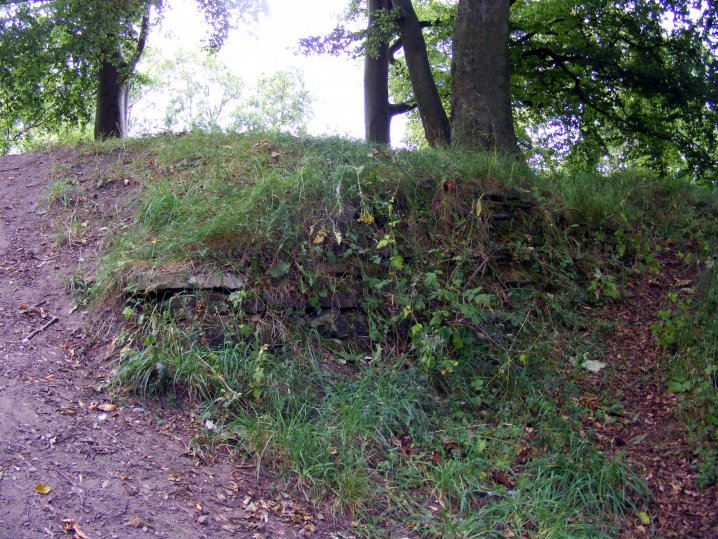Mold

The castle of the Mohauts would seem to have been built early
after the Norman conquest of Cheshire, but of its actual foundation
date there is no information. It is often equated with the
Castell Guidgruc
mentioned in the Welsh Annales as taken in 1146, but it has also been argued
that this was in Ceredigion. The Mohauts were hereditary
stewards of Chester in the twelfth and thirteenth centuries.
It is possible that Hawarden was
their major castle and Mold,
to which they gave their name, was of secondary importance to them as
it was often held by the Welsh against them. In 1199 Llywelyn ab
Iorwerth (d.1240) stormed Mold and held it for the rest of his life,
apart from the years 1210 to 1212. King Henry III regained
Mold in 1241 when he seems to have laid the first stone foundations of
the castle (fecit et fundare Montem altum). The Mohauts later had
their castle back, but lost it again in 1245 despite the justiciar of
Chester trying to relieve it. The castle was retaken the next
year after the death of Prince Dafydd.
In November 1256 Llywelyn and Dafydd ap Gruffydd seized
Moldsdale, but probably failed to take the castle, which was eventually
taken after 1260 and before 1265
when Prince Llywelyn stormed Hawarden castle.
Llywelyn himself was at Mold in 1269, so may have used the castle
himself. After the reconquest of 1276/77, Mold and Hawarden were in the care of Kenwrick Seys,
under the rule of Edward I while the heir, Roger Mohaut (1262-96), was
underage. On 15 January 1281 both lands were transferred to Roger
Clifford (d.1286). There is no mention of the castle in the war
of 1282, but in 1294 the fortress fell to the rebels under Prince Madog
ap Llywelyn. This probably marked the end of the castle's
history, while the last Mohaut lord, Robert, died in 1329.
Description
The castle consists of a fine motte, some 40' high with a summit some
65' across with a definite lip to the edge. It is claimed that a
shell keep stood on top of this, but there is little evidence of this
now, the revetting appearing to be more modern. The castle is set on a
natural hillock, while to the south lie two platfroms which are the
probable site of the bailey, although both have been heavily altered
from 1792 onwards when they became a recreational garden.
Why
not join me at other Lost Welsh Castles next Spring?
Please see the information on tours at Scholarly
Sojourns.
Copyright©2019
Paul Martin Remfry

